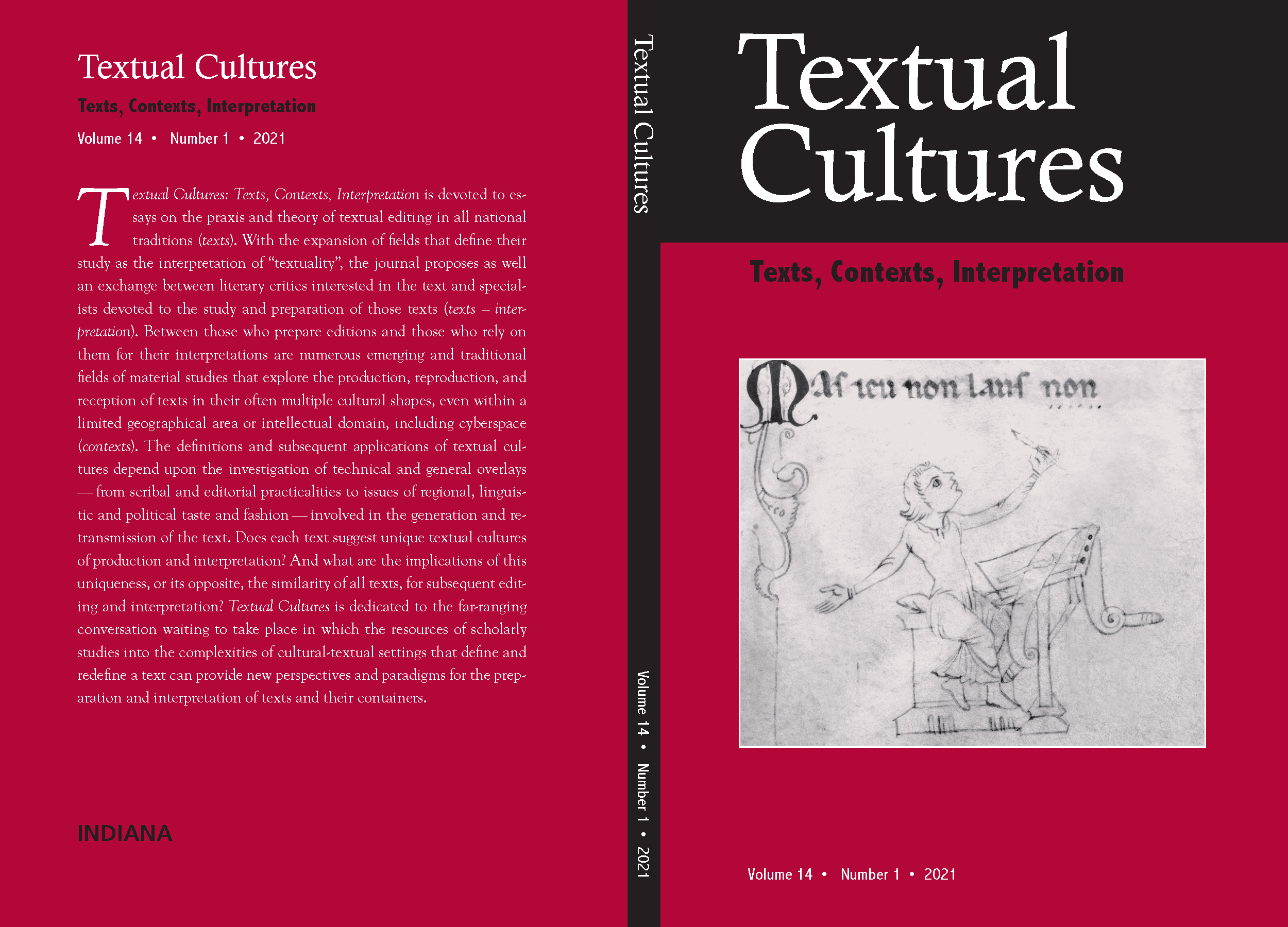Of Epicene Particles and Other Misleading Tricks Gender Ambiguity in Silvina Ocampo’s “Carta perdida en un cajón”
Main Article Content
Abstract
“Carta perdida en un cajón” [Letter lost in a drawer] is a paradigmatic example of simultaneous ambiguities at work in Silvina Ocampo’s fiction (1903–1993). In this short story published in 1959, pronouns and shifters, as well as endings that mark gender cooperate to erase certainties and make the reader actively seek clues to understand the exchange the short story sets up. By scrutinizing its manuscript, I examine Ocampo’s writing and revision strategies and elaborate on some of her creative processes in her search for ambiguity. Through five key compositional moves I have identified in her manuscripts, my essay focuses on how Ocampo revises and ramps up the writerly effect of gender ambiguity that allowed the construction of queer identities in her fiction. I argue that the insertion of epicene particles and insults — which are less common in Spanish than gendered ones — , added at later stages of revision, demonstrate the intentional pursuit of a reading marked by confusion around the depiction of a non-normative desire. Genetic criticism allows us to reveal the painstaking process by which queer desire nudges its way into expression.
Downloads
Article Details
Authors who publish with this journal agree to the following terms:
- Authors retain copyright and grant the journal right of first publication with the work simultaneously licensed under a Creative Commons Attribution License (see:http://creativecommons.org/licenses/by/3.0/us/) that allows others to share the work with an acknowledgment of the work's authorship and initial publication in this journal.
- Authors warrant that their submission is their own original work, and that they have the right to grant the rights contained in this license. Authors also warrant that their submission does not, to the best of your knowledge, infringe upon anyone's copyright. If the submission contains material for which an author does not hold the copyright, authors warrant that they have obtained the unrestricted permission of the copyright owner to grant Indiana University the rights required by this license, and that such third-party owned material is clearly identified and acknowledged within the text or content of their submission.
- Authors are able to enter into separate, additional contractual arrangements for the non-exclusive distribution of the journal's published version of the work (e.g., post it to an institutional repository or publish it in a book), with an acknowledgment of its initial publication in this journal.
